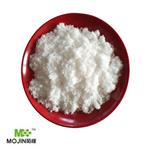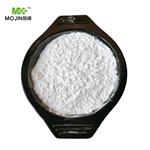Propylparaben sodium occurs as a white, crystalline, odorless or
almost odorless powder.
White or almost white, hygroscopic, crystalline powder.
Sodium Propylparaben is a preservative. Sodium Propylparaben is also an excipient used in various pharmaceutical formulations.
Pharmaceutic aid (antimicrobial preservative).
Propylparaben sodium is produced from benzoic acid.
Flammability and Explosibility
Not classified
Pharmaceutical Applications
Propylparaben sodium is used as an antimicrobial or antifungal
preservative in oral pharmaceuticals and in many water-based
cosmetics. It is generally used in combination with other paraben
esters.
This substance is one of the parabens family. Parabens are esters formed by p-hydroxybenzoic acid
and an alcohol. They are largely used as biocides in
cosmetics and toiletries, medicaments, or food. They
have synergistic power with other biocides. Parabens
can induce allergic contact dermatitis, mainly in
chronic dermatitis and wounded skin.
Propylparaben sodium is used in oral pharmaceuticals and
cosmetics. The pure form is toxic by the IV route and moderately
toxic by ingestion and the IP route. Propylparaben sodium may
cause asthma, rashes, and hyperactivity.
LD50 (mouse, IP): 0.49 g/kg
LD50 (mouse, IV): 0.18 g/kg
LD50 (mouse, oral): 3.7 g/kg
Propylparaben sodium is stable under normal conditions. It
decomposes on heating. Store in a tightly closed container.
The activity of propylparaben sodium can be adversely affected by
the presence of other excipients or active ingredients, such as
atropine, essential oils, iron, magnesium trisilicate, talc, polysorbate
80 and other nonionic surfactants, sorbitol, weak alkalis, and
strong acids.
Included in the FDA Inactive Ingredients Database (oral capsules,
tablets, suspensions). Accepted for use as a food additive in Europe.
Included in nonparenteral medicines (oral capsules, mixtures,
orodispersible tablets, solutions and suspensions; cutaneous emulsions)
licensed in the UK.



